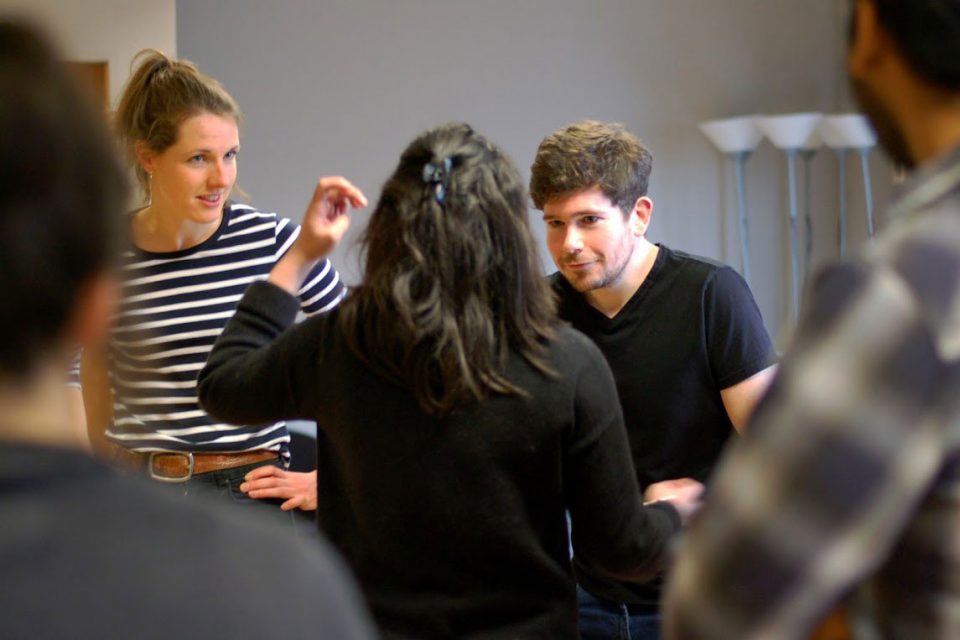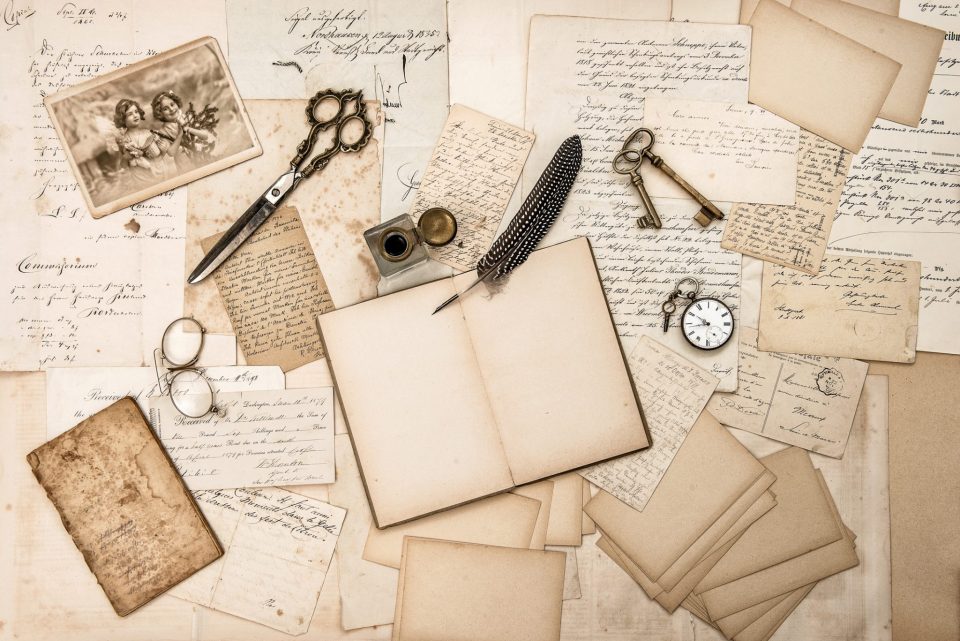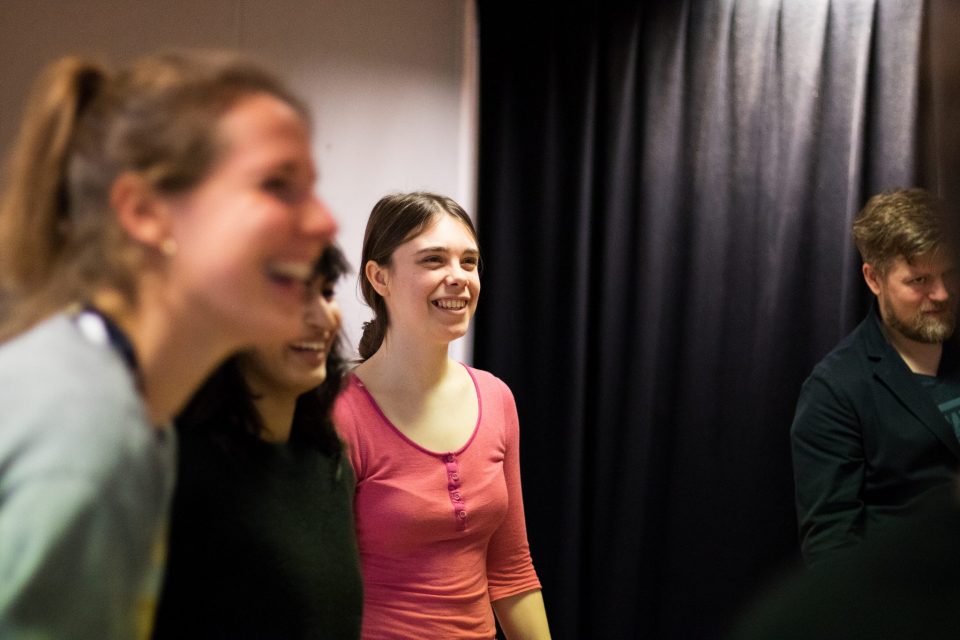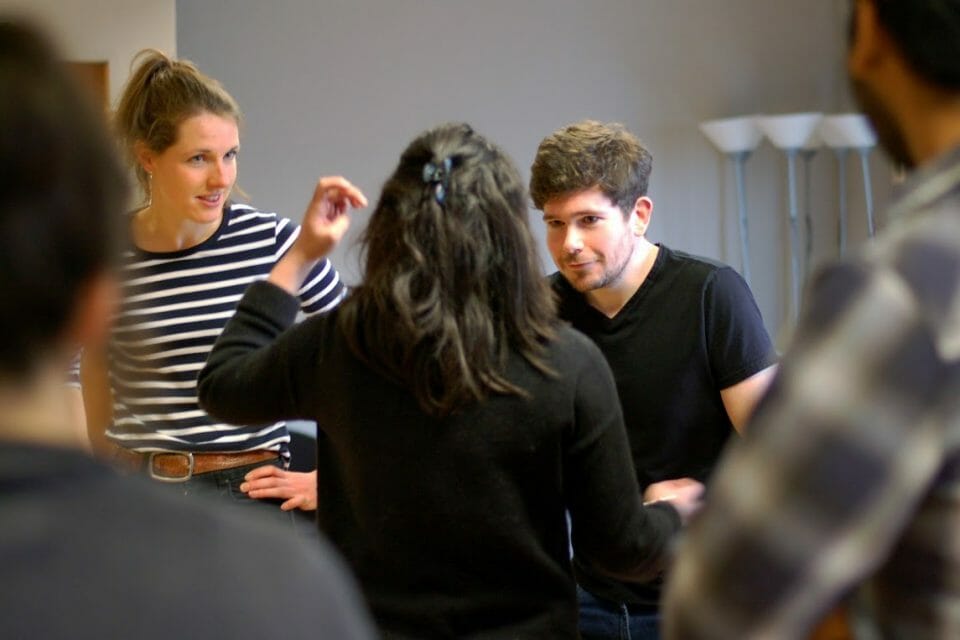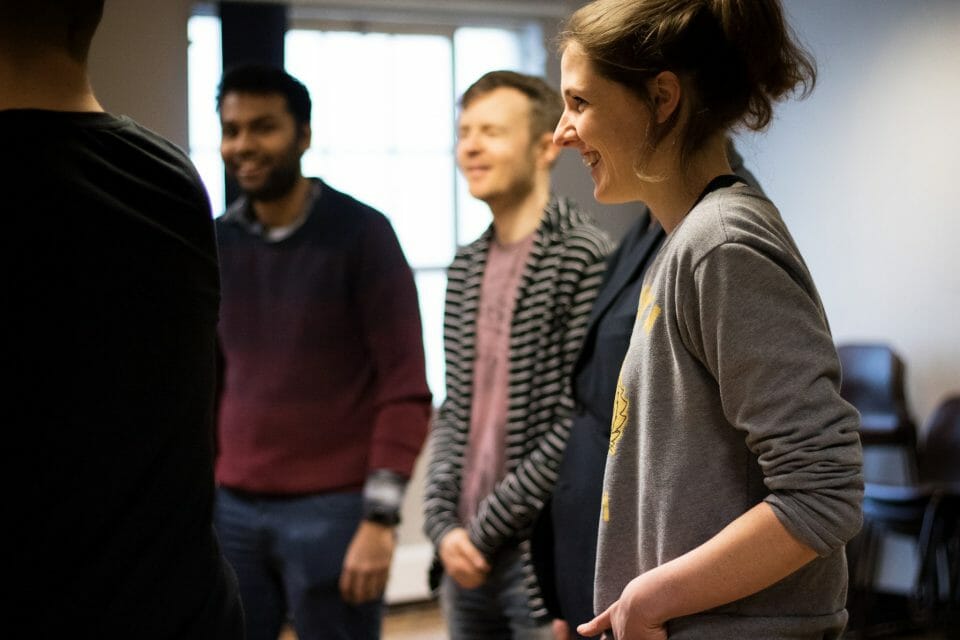Good Morning! Description Two improvisers ‘go to sleep’ on stage. When they have settled, the teacher says “Good morning” and they wake up. There is no dialogue until the teacher tells them they can speak. The actors figure out where they are and what their relationship is with one another. However they first behave on[…]
Car Journey Description Five people on stage in a car set-up. Tell them they are on their way somewhere they don’t normally go (a convention, concert, festival, theme park, etc.). They must be silent for the first 30 seconds of the scene. They cannot stop the car or get out. Ideally they will establish relationship[…]
What You Just Said Description Pair of improvisers on stage. They stand opposite one another; no need to act out a full scene. Each line begins with “What you just said is very important to me because…” and they finish the line. Improvisers should only be reacting off the last line they just heard. Purpose[…]
That Scene Was About Description Play a scene with a suggestion. The next scene is started by one of the actors saying ‘that scene was about’ and summing up the scene before. They then play the scene they just described. For example, there is a scene about a couple hesitating getting off a boat to[…]
Temple of Doom Description 5 people stand at the side of the stage. There is no dialogue in this exercise, but you can make sounds. The first person goes into the Temple of Doom and is killed by some kind of trap. Get them to use their best object work to help us be clear[…]
Description Improvisers play 3 or more scenes with the same setting as a suggestion for each. Each scene is different with different characters and different use of the suggestion. Example Suggestion: Beach. Scene 1: Two people put sun tan cream on each other and relax in the sun. Scene 2: An older couple look out[…]
This exercise is from Rich Talarico. 4-5 improvisers discuss the offstage character of Mr/Ms/Chef/Coach So and So before Mr So and So enters and embodies what they have been saying about them. You can play this like a wacky short form game, but – ideally – play it in a realistic way. Perhaps everyone is[…]
I’m Watching You, Watching Me This is an adapted Meisner exercise from Rachel Blackman. Sit opposite a partner on chairs, knees close or touching. Don’t break eye-contact and repeat the phrase “I’m watching you, watching me” back and forth. It’s okay to laugh. Hopefully this will get you to notice a lot of small gestures[…]
Have everyone place a chair somewhere in the room; all facing in different directions and evenly spaced out. One person gets out of their chair and starts from the other end of the room. They must sit in the one empty chair, but they can only move with their knees locked together which slows them[…]
It’s Tuesday This is a fantastic exercise! Two improvisers in a scene. The first improviser deliberately says a boring opening line without any major emotional commitment. The second improviser reacts and responds to make that opening line matter. They both then react and respond to that and play the scene that results. The opening line[…]
Conflict/Agreement Scenes A scenic exercises on finding agreement and relationship in a scene instead of conflict. Avoiding conflict isn’t a rule, but it is something that can often help shows so it’s a useful skill to have – being able to take a conflict scene and find agreement and relationship. In the exercise the teacher[…]
Rewind and Unblock This is a helpful exercise for teachers wanting to side coach scenes when improvisers aren’t yet used to that, as it gives a context where the helpful nudge from the teacher isn’t unexpected and doesn’t feel like a criticism (which it’s not). The exercise can then be used to help improvisers to[…]




